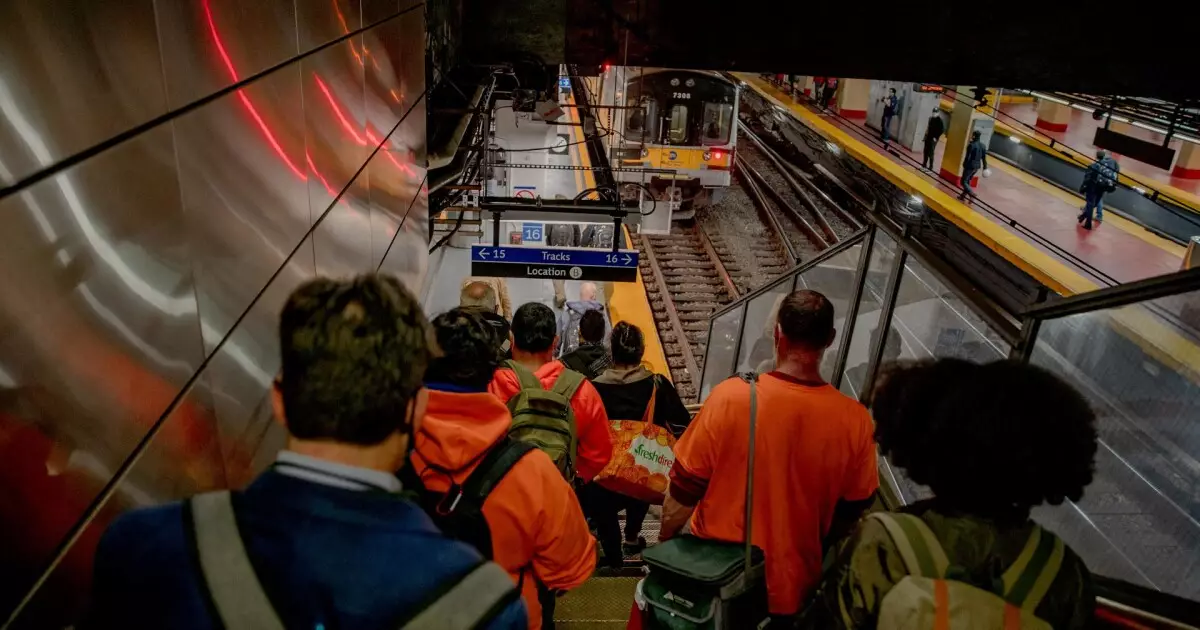The ongoing saga surrounding the transformation of New York’s Pennsylvania Station is a glaring testament to the complexities of intergovernmental power dynamics. With the Trump administration now firmly gripping the reins of this staggering $7 billion project, the move to oust the Metropolitan Transportation Authority (MTA) is a signal that political whims can overshadow the very public interest it seeks to serve. This decision, announced by Secretary of Transportation Sean Duffy, brings Amtrak to the forefront as the new project leader, effectively sidelining the MTA. While on the surface, it appears to be a decisive action aimed at cutting waste and inefficiency—a narrative often promoted by the administration—this maneuver raises significant concerns about accountability and oversight in such a monumental undertaking.
The underlying motivations appear connected not only to fiscal conservatism but also to a strained relationship with local transit authorities. The MTA’s position as a stalwart in public transportation is now being challenged in a way that seems politically charged rather than purely strategic. With Duffy slashing federal grants, ostensibly to save $120 million while touting this as a “major victory for New Yorkers,” it becomes increasingly difficult to discern whether this is true fiscal reform or a mere exercise in political theatrics.
Political Theater or Genuine Gratitude?
New York Governor Kathy Hochul’s enthusiastic endorsement of this shift may not be as straightforwardly triumphant as presented. While it’s commendable that she has sought funds to elevate the station from its current dilapidated state, one must question the broader implications of ceding control to federal hands. Hochul framed this move as a way to save New York taxpayers a staggering $1.3 billion; however, at what cost? The very essence of local governance is being eroded as a direct impact of political maneuvering, potentially setting a precedent that disregards the complexities of city-led initiatives.
Furthermore, Hochul’s gratitude towards the Trump administration highlights the discomforting reality of negotiating public funds in a partisan climate. Instead of focusing on a collaborative approach to transit reform, we find ourselves witnessing a race for political favor—a tragic irony in a state that prides itself on its autonomy and progressive values. The fact that a significant project of this magnitude is tethered to the whims of political leaders instead of community needs is cause for concern and skepticism.
The Congestion Controversy
Compounding this already convoluted situation is the contentious issue surrounding congestion pricing in Manhattan. The looming April 20 deadline imposed by the Trump administration seeks to halt tolls for drivers entering Manhattan, a decision that the MTA is adamantly resisting. This contentious point is telling of the friction between local demands for revenue generation and federal directives that aim to contract the agency’s authority.
Duffy’s ultimatum to the MTA reveals a broader trend: an aggressive push by the administration to control regional transit decisions through the threat of withdrawing federal support. This tactic prompts a tactical reevaluation of how transit agencies must operate under politically charged environments, shifting focus from community-benefitting innovations to survival-mode compliance.
Promises vs. Reality
The ambitious plan to reimagine Penn Station as a modern transit hub with ample amenities is undeniably appealing on paper. However, lofty declarations about replacing the current transit hub with a single-level facility harbor skepticism amid a backdrop of budgets that are prone to distortion and scope creep. Far too often, grandiose plans are stymied by red tape, oversight failures, and mismanagement—issues the MTA has itself grappled with in the past.
While FRA’s Chief Counsel Kyle Fields emphasized the intention to streamline project execution under the auspices of Amtrak, it rings hollow when history reminds us of similar promises that dissolved into delays and budget shortfalls. The notion that the single grant approach will eradicate the inefficiencies seen with previous funding structures remains unproven and, frankly, naive.
This entire evaluation of the Penn Station overhaul elucidates a fundamental challenge: can significant infrastructure projects genuinely serve the needs of the public when caught in a tempest of political gamesmanship? As New Yorkers stand at the crossroads of this costly endeavor, the drive for accountability and efficiency seems increasingly eclipsed by the overarching thirst for control. The tragic tale of Penn Station serves as a stark reminder of the pitfalls inherent in politicizing public infrastructure.


Leave a Reply